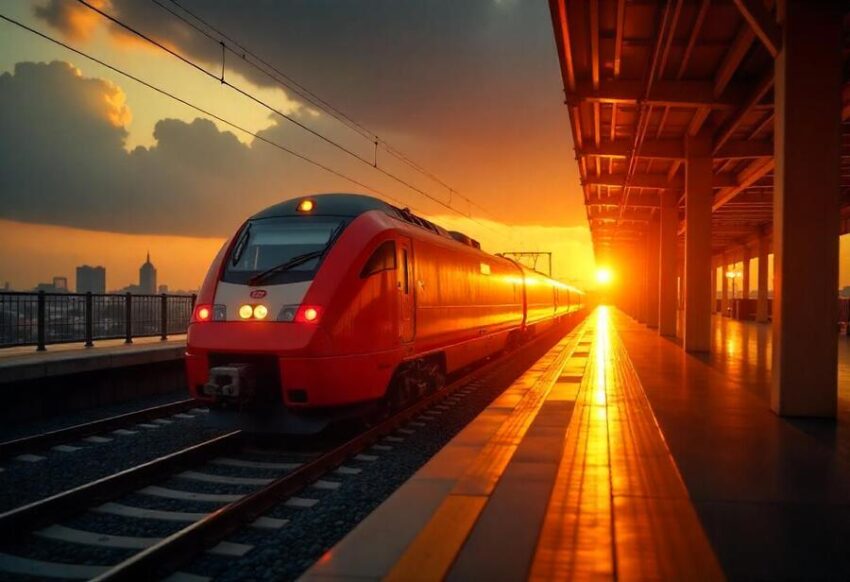Wednesday, May 21, 2025

Vietnam is embarking on a transformative journey by partnering with China, Japan, South Korea, and other global technology experts to develop a sixty billion dollar high-speed rail network connecting Hanoi and Ho Chi Minh City. This collaboration aims to leverage advanced international expertise and cutting-edge technologies to deliver a world-class transportation system that will dramatically reduce travel times, boost economic integration, and enhance connectivity between Vietnam’s two largest cities. By joining forces with leading rail innovators, Vietnam is positioning itself to accelerate infrastructure development, foster domestic manufacturing capabilities, and support sustainable growth across the nation.
Comprehensive Project Background
This high-speed rail initiative follows the Vietnamese government’s earlier approval of a larger $67 billion rail development framework in late 2024. Initial talks had also explored collaboration with major international construction firms, including leading companies from China, to bring advanced expertise into the project. Covering approximately 957 miles, the rail line will traverse a densely populated corridor, connecting Hanoi with its population of nearly 8.7 million and Ho Chi Minh City with approximately 9.9 million residents.
The proposed railway is expected to transform domestic transportation by offering a fast, reliable alternative to air and road travel, which are currently the primary modes connecting these key urban centers.
Investment and Financing Structure
The detailed project proposal was submitted by Vinspeed, a Vietnamese-based company, which has put forth a plan to complete the railway five years earlier than previous government estimates. The total project cost is estimated at 1,562 trillion Vietnamese dong, equivalent to about $60.3 billion, excluding expenses related to land acquisition and site preparation.
Vinspeed has committed to financing twenty percent of the total cost upfront. The company is requesting that the government provide the remaining eighty percent, around $48 billion, under a highly concessional loan agreement featuring zero percent interest over a thirty-five-year period. The ambitious timeline targets construction commencement within the current year, aiming for full operational capability by the close of 2030. Such an accelerated schedule contrasts with typical high-speed rail projects in Western countries, which often require longer timelines due to regulatory and logistical complexities.
Understanding High-Speed Rail Standards and Global Context
High-speed rail systems worldwide are classified based on their operating speeds. Trains are considered high-speed if they achieve at least 124 miles per hour on upgraded existing tracks or exceed 155 miles per hour on newly built tracks designed specifically for such speeds. Presently, over twenty countries operate high-speed rail networks, with nations like Japan, South Korea, and China setting global benchmarks for technology, speed, and passenger service.
China, in particular, has rapidly developed the world’s largest high-speed rail network since its first line debuted in 2008. Today, China’s network stretches approximately 25,000 miles—more than twice the combined total of all other countries—enough to circle the Earth once. The nation’s experience demonstrates the transformative economic and social benefits that high-speed rail can bring, serving as a model for Vietnam’s aspirations.
Technology Partnerships and Domestic Development
To bolster the project’s success, Vinspeed is actively engaging in technology transfer negotiations with top-tier partners from China and Japan. These discussions focus on acquiring cutting-edge technologies and expertise essential for the domestic production of locomotives, rail carriages, and advanced signaling systems. This strategy aims to cultivate Vietnam’s local manufacturing capabilities, reduce reliance on imports, and support long-term sustainability and maintenance of the rail network.
This collaborative approach leverages the successes of neighboring countries with mature high-speed rail industries, aligning with Vietnam’s goals to build technical self-reliance in key infrastructure sectors.
Anticipated Next Steps and Impact
The Ministry of Construction is in the process of gathering and consolidating feedback from public consultations and expert assessments. Following this review, a final proposal will be submitted to Vietnam’s National Assembly for approval. Upon receiving the green light, the government and project stakeholders plan to initiate construction by the end of 2025.
Completion and operational launch are targeted for December 2030, promising to revolutionize travel between the country’s major economic hubs. Once operational, the high-speed rail is expected to enhance connectivity, stimulate regional economic growth, and support Vietnam’s broader development ambitions by facilitating faster movement of people and goods.
Vietnam is partnering with China, Japan, South Korea, and global experts to build a sixty billion dollar high-speed rail network connecting Hanoi and Ho Chi Minh City, aiming to boost connectivity, reduce travel times, and drive economic growth. This collaboration leverages advanced technology and expertise to accelerate Vietnam’s infrastructure development and national integration.
In summary, Vietnam’s high-speed rail project represents a bold investment in the nation’s future infrastructure, blending international expertise with domestic innovation to create a transformative transport corridor. If realized, it will place Vietnam among Asia’s leaders in modern rail transport, setting new standards for efficiency, sustainability, and economic integration.






